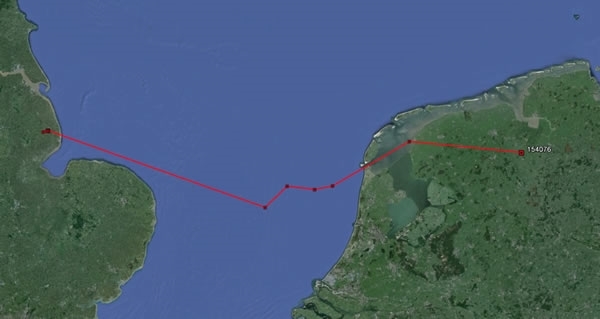By Chris Heward, Wetland Research Assistant
In early March, Andrew Hoodless and I tagged four new woodcock with Satellite tags. These were Fonthill Abbie II, Sir John, Nellie II and Thorn.
Over the 3-4 weeks since, we’ve seen these birds leave the British Isles as they head for their breeding sites across Europe - with the exception of Thorn.
Thorn has continued to transmit from Lincolnshire, where we caught him, but has shown no sign of wanting to leave the country. In fact, we were beginning to think that Thorn, like our Scottish woodcock Charlie, was a British resident bird destined to spend the entire year in Britain.
Thorn off the mark
Thankfully, I can now reveal that Thorn has started his migration. Whilst this data does not currently appear on the Woodcock Watch website, something should be published in the next few days.
The website filters the data based on an accuracy reading provided by the tag and only plots the very highest-quality. We are waiting for some more accurate locations before they appear on the map.

Nevertheless, the data received today certainly seems reliable and we think it probably realistically reflects Thorn’s recent movements.
Thorn was last recorded in Lincolnshire on the 3rd April. The next we heard from him was at 8:42pm, on the 5th April, when he was approximately half way across the North Sea. By 10:38pm, that evening, he had made landfall in the Netherlands.
It seems likely that Thorn left Lincolnshire at sunset on the 5th, assuming he completed the first half of his sea crossing at a similar speed to the second. This means he’s travelled 385 km (240 miles) across open sea in around 5 hours.
If this is true, Thorn was travelling at speeds of upto 75 km/h (45 mph). This may seem very fast but is probably normal for migratory birds based on data for other species ( Great snipe are believed to migrate at top speeds of up to 60 mph).
Where next for Thorn?
A quick check of Met Office data shows Thorn made his migration at a time when the skies were clear, the visibility rated as very good, and the wind was light and from the south-west; providing him with a gentle tailwind.
Now our attention is turned to what Thorn does next. Generally our birds fall into three broad camps, as either Russian/Baltic, Finnish or Scandinavian woodcock. From his current location there is still the potential for Thorn to fall into any of these three categories – depending on whether he turns north and crosses into Sweden via Denmark or continues east over Poland.